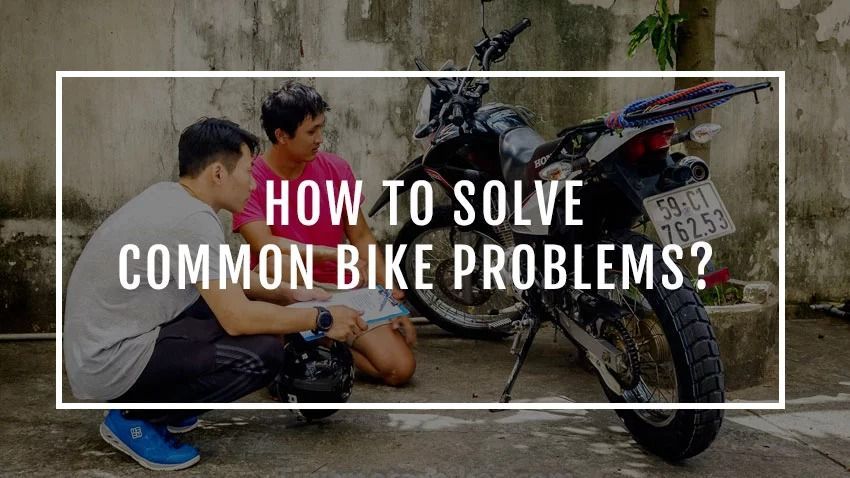Everything about riding a motorbike in Thailand
Last updated: 2021-04-28

Scooters in Southeast Asia are the most important and the most effective means of transport. It is an everyday mode of transport for most people of Thailand and a large number of tourists. Every day, millions of people get on a scooter to get to work, do shopping or, in case of tourists, visit the most beautiful corners of Thailand. Unfortunately, Thailand has some pretty staggering motorcycle injury statistics. To prevent yourself from becoming one of those statistics, read below article and keep in mind some safe driving practices and basic rules of the road.
Safe driving practices
Although at first glance, Thailand’s infamous “driving dance” seems like a chaotic jumble of moving vehicles, there is actually a method to the madness. Here is an extensive list of driving tips to make your time on the streets of Thailand a bit safer.
Wear your helmet. Riding around without a helmet is extremely dangerous. The majority of motorcycle deaths can be prevented if drivers and passengers wore helmets. Moreover, riding without a helmet is against the law and you can be fined. Usually, when renting a scooter, you also get a helmet for yourself and a passenger. Otherwise, ask for it.
Use the horn. A horn is a very important element of driving. In opposition to European countries, Thai people do not use the horn in an aggressive way. It is used often, signaling all maneuvers, but also as information: I’m driving!
Cars and trucks. Watch out for cars and trucks – scooter drivers are doing very well, but I can not write the same about car drivers. It happens that car drivers open the door when you stop at red traffic lights, so do not drive too close to stop suddenly at his door.
Drive defensively. The traffic in Thailand moves at a constant pace, so as long as you’re aware of your surroundings, you should not have a problem. Moreover, motorcycles in Thailand are routinely operated by children as young as 12, so you must remain vigilant. Motorbike riding experience. If you’ve never ridden a motorbike before, please, just don’t bother renting one. Thailand is not the place to learn. Otherwise, you put yourself and others at risk.
Cover up. Wear more than just a sleeveless t-shirt, shorts, and flip-flops. This does not save you from disfiguring scars after an accident. Wear protective footwear and clothing to give you some protection should the worst happen.
Don’t drive after drinking. Better take a songthaew or tuk-tuk and don’t risk wobbling down the road and crashing into something. Your insurance will not cover medical expenses if it turns out that you were under the influence of alcohol and drugs.
Get proper insurance. Check your insurance terms and conditions to make sure you will be covered in the case of road accident. Often, insurance is valid for smaller engine capacities and does not cover so-called big bikes.
Don’t drive at night if you don’t have to. Driving at night is considered to be particularly dangerous, mainly because of the drivers who drive without lights.
Rules on the Road
Traffic rules, road signs, and roadways often are treated as a suggestion in Thailand. Riding the highway on the wrong way is a standard. In practice, a larger vehicle takes precedence. U-turn at an intersection, crossing the double line or changing the lane at the intersection is frequent, although not consistent with the rules. Driving without lights is quite common after dark, especially if the street or road has street lights. Before you set out to conquer Thailand on a motorcycle, remember about some important rules on the roads.
Carry driver’s license on you at all times. Driving license in Thailand – it is not required to rent a motorcycle, while according to the regulations, every driver should have an important national motorcycle drivers license issued in your home country, valid for a motorcycle AND, International Driving Permit (IDP).
The speed limits. 50 km/h in towns 90 km/h on open roads 120 km/h on highways
You must wear a helmet. As motorcyclist you must wear a helmet, and so must a pillion passenger.
Minimum Driving Age. You have to be at least 18 to be able to drive in Thailand. Even so, children who ride motorcycles are often seen.
Left side traffic. Traffic in Thailand is left-handed, so keep left driver!
Mobile phones. It’s illegal to talk or text on a mobile phone in Thailand whilst driving unless you have a hands free kit.
Drinking and Driving. The drink driving laws in Thailand state that you must have no more than 50mg of alcohol per 100ml of blood. If you have driven for less than five years then the limit drops to 20mg per 100ml of blood.
Final thoughts
A scooter in Thailand is a great way of exploring the area. You can travel anywhere and be independent, which makes it very easy to get to know the country from the inside out. Navigating the streets of Thailand is not scary if you have experience riding a motorcycle and have read safety tips and road rules in Thailand. If you’re a novice, avoid big cities like Bangkok, where traffic is very big. Having no experience with such a large number of vehicles on the streets, it is not difficult to cause a collision – a better solution will be to use the metro, skytrain or just taxis, which in Bangkok are very cheap.